Cilantro, with its vibrant green leaves and distinctive flavor, is a beloved herb in many cuisines around the world.
Whether you’re a seasoned gardener or a novice, cultivating your own cilantro plants can be a rewarding experience.
In this comprehensive guide, we’ll explore the art of growing and caring for cilantro, from the benefits of having it in your garden to selecting the right varieties to suit your tastes.
Benefits of Growing Cilantro
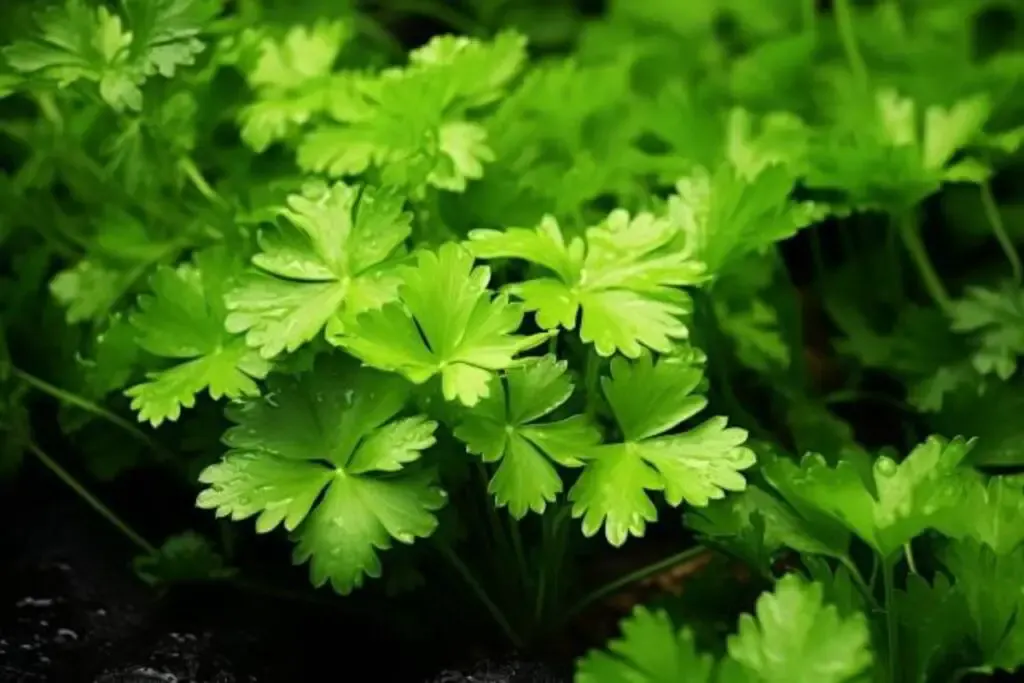
1. Fresh Flavor
Cilantro’s bright, citrusy flavor adds a burst of freshness to a wide range of dishes, from salsas and curries to salads and soups.
2. Versatile Herb
Cilantro is incredibly versatile. You can use both its leaves (coriander) and seeds in cooking, allowing you to experiment with a variety of flavors in your culinary creations.
3. Health Benefits
Cilantro is packed with antioxidants and nutrients that may offer potential health benefits, such as supporting digestion and reducing inflammation.
My Favorite Cilantro Varieties
Now, let’s explore some cilantro varieties that I particularly enjoy growing in my herb garden.
These varieties not only offer unique flavors but are also relatively easy to cultivate, making them perfect for gardeners of all levels:
1. Slow-Bolt Cilantro
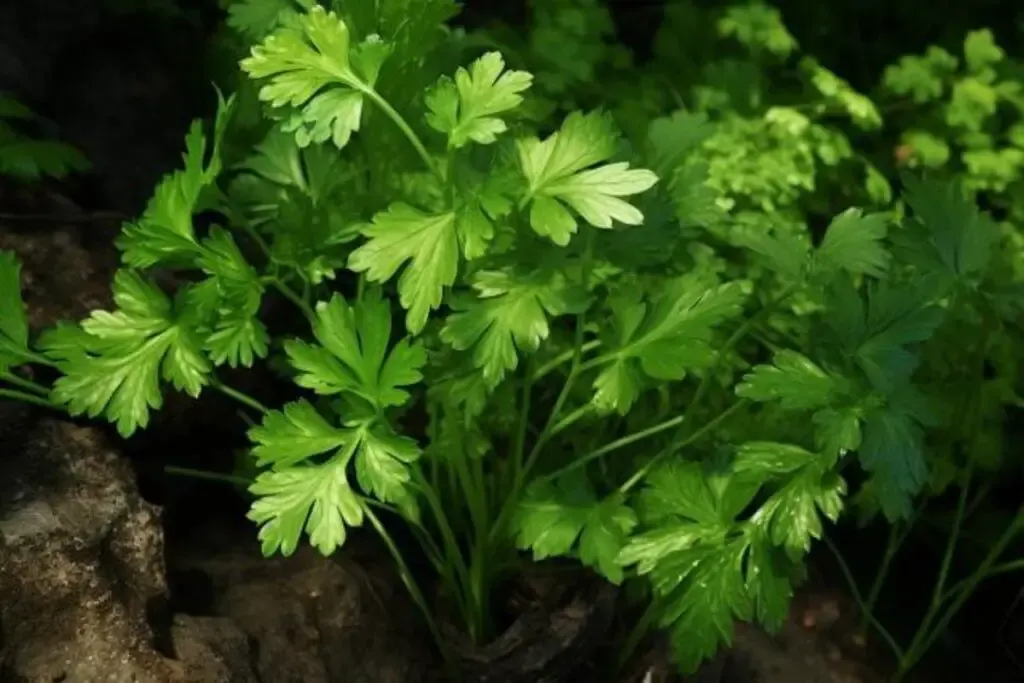
Slow-bolt cilantro is a top pick for gardeners. It’s bred to resist bolting (going to seed) in hot weather, allowing you to enjoy fresh leaves for a more extended period.
2. Santo Cilantro
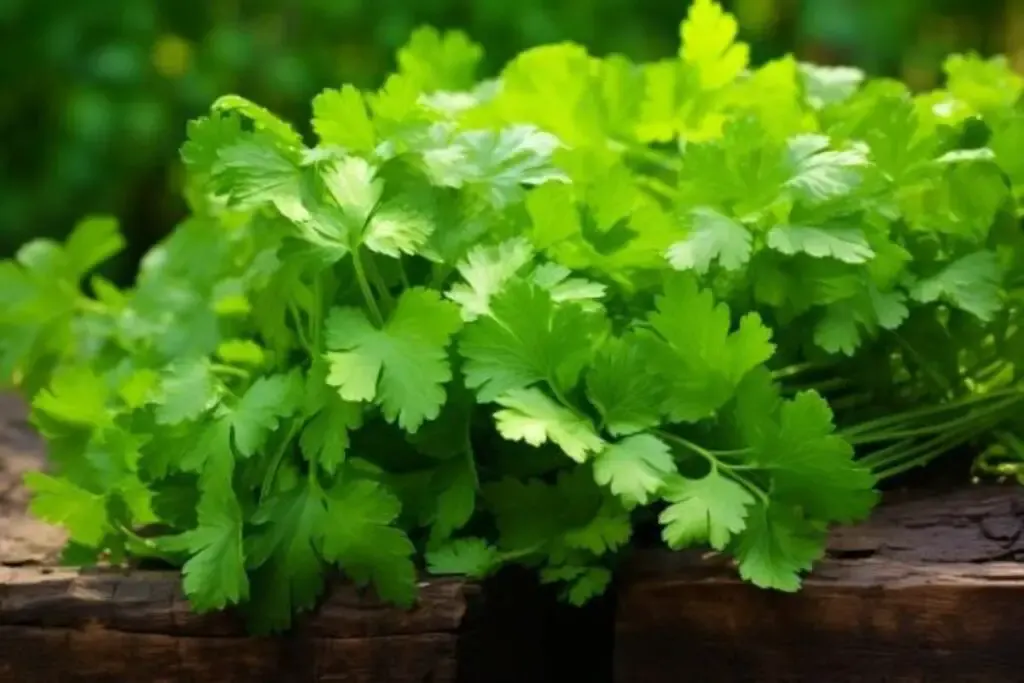
Santo cilantro is another excellent choice, known for its robust flavor and resilience. It’s a reliable performer and tends to produce an abundant crop of flavorful leaves.
3. Calypso Cilantro
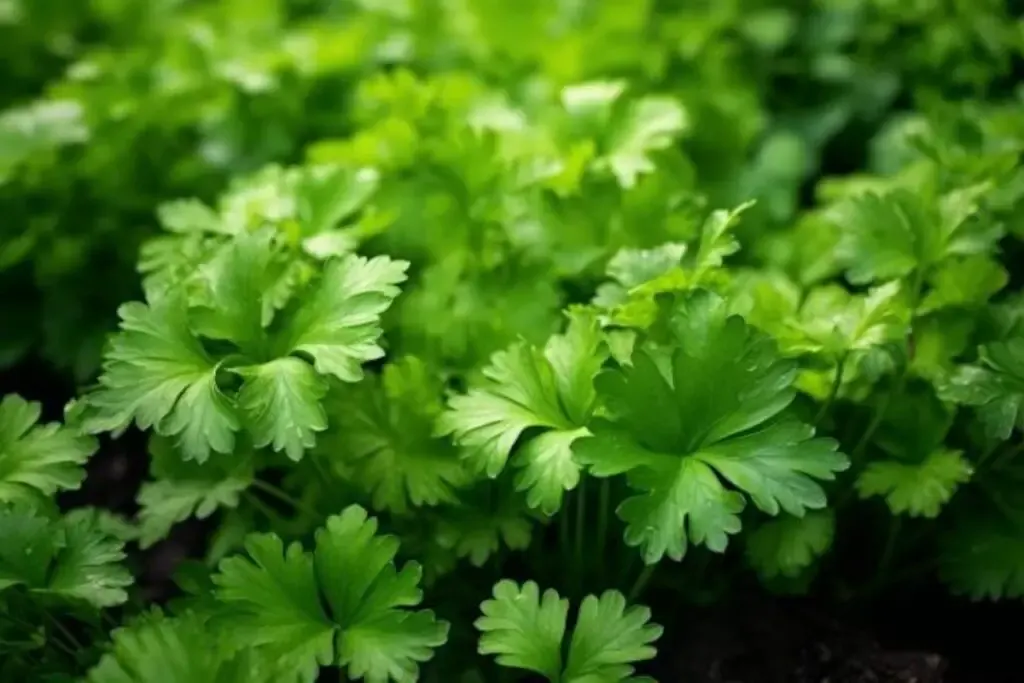
Calypso cilantro offers a unique twist on the traditional cilantro flavor. It has a slightly spicier and more intense taste, making it an exciting option for those looking to experiment with their culinary creations.
Cilantro Care
Caring for cilantro is essential to ensure a bountiful harvest of aromatic leaves and seeds.
In this section, we’ll cover various aspects of cilantro care, from planting to providing the right conditions for optimal growth.
Planting
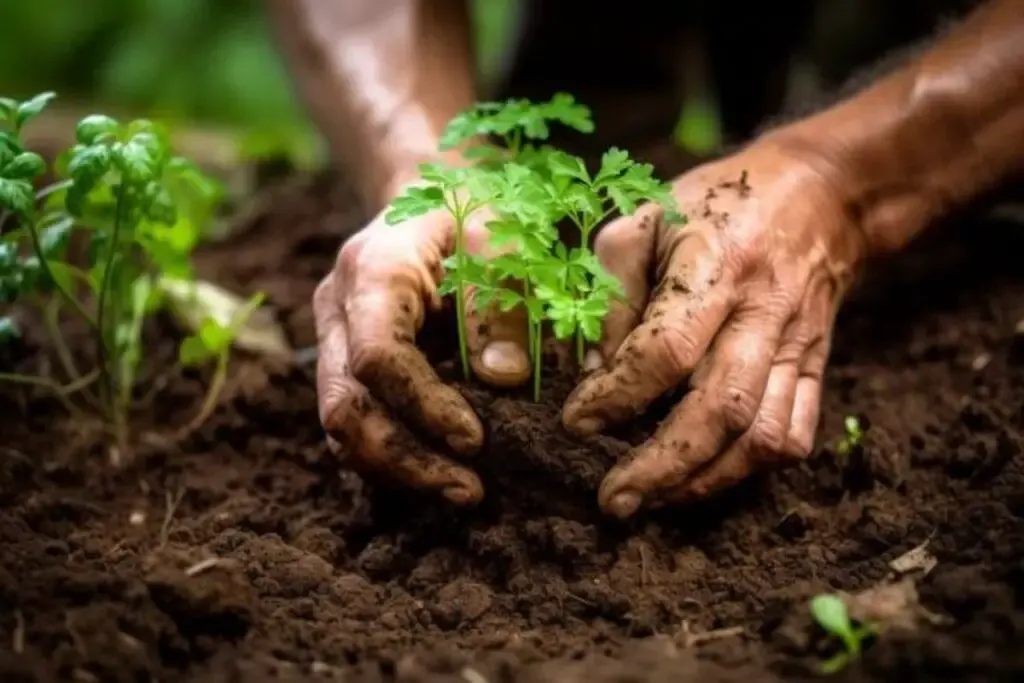
Proper planting is the first step in growing healthy cilantro. Here’s what you need to know:
- Select the Right Location: Choose a planting location that receives partial to full sun. Cilantro benefits from some shade during the hottest part of the day, especially in regions with scorching summers.
- Soil Preparation: Cilantro thrives in well-draining, loamy soil with a pH level between 6.2 and 6.8. You can amend the soil with organic matter to improve its fertility.
- Spacing: Plant cilantro seeds or seedlings 6 to 8 inches apart in rows or clusters. Providing adequate space allows for good air circulation and prevents overcrowding.
Light
Cilantro prefers a balance of sunlight and shade:
- Partial to Full Sun: Cilantro grows best in partial to full sun, which means it should receive at least 4-6 hours of direct sunlight daily. However, in hot climates, providing some afternoon shade can help prevent the plant from bolting too quickly.
Soil
Well-prepared soil is crucial for healthy cilantro growth. Pay attention to soil quality:
- Well-Draining Soil: Cilantro dislikes waterlogged soil, so ensure it’s well-draining. Incorporating compost or organic matter can improve drainage.
- pH Level: Maintain the soil pH level in the slightly acidic to neutral range, around 6.2 to 6.8.
Water
Proper watering is vital to prevent issues like wilting and bolting in cilantro. Here are some watering tips:
- Consistent Moisture: Keep the soil consistently moist but not waterlogged. Water cilantro when the top inch of soil feels dry to the touch.
- Mulch: Applying a layer of organic mulch around cilantro plants helps retain soil moisture and regulates temperature.
Temperature and Humidity
Cilantro prefers moderate temperatures but can be sensitive to extreme heat:
- Temperature: Cilantro thrives in temperatures between 50°F and 85°F (10°C to 29°C). In hot weather, provide some shade and consider planting it in the cooler seasons.
- Humidity: Cilantro is adaptable to various humidity levels and doesn’t require special attention regarding humidity.
Fertilizer
Feeding your cilantro plants with the right nutrients is essential for robust growth:
- Balanced Fertilizer: Use a balanced, all-purpose fertilizer or one with slightly higher nitrogen content to promote leafy growth. Apply it according to the manufacturer’s recommendations, typically during planting and once during the growing season.
Harvesting Cilantro
Harvesting cilantro is a gratifying task that allows you to enjoy its fresh, aromatic leaves in your culinary creations. Here’s how to do it:
- Timing: Start harvesting cilantro leaves when the plant reaches about 6 inches in height. Typically, this occurs within 3-4 weeks of planting.
- Leaf Harvesting: Snip the individual leaves or leafy stems as needed for your recipes. Use scissors or garden shears to make clean cuts, leaving a few inches of growth at the base to encourage regrowth.
- Continuous Harvest: Cilantro is a cut-and-come-again herb, which means you can harvest it continually throughout the growing season. Regular harvesting encourages the plant to produce more leaves.
Pruning
Pruning cilantro helps maintain its vigor and delays bolting:
- Bolting Prevention: To prevent cilantro from bolting (going to seed) prematurely, regularly pinch off any flower buds or seed heads as they form. This encourages the plant to focus on producing leaves instead of seeds.
Propagating
Propagating cilantro is possible through the following methods:
- Seed Saving: Cilantro readily produces seeds once it bolts. Allow some plants to go to seed, and you can collect the seeds for planting in the next season.
How to Grow Cilantro From Seed
Growing cilantro from seed is a straightforward process:
- Seed Selection: Choose high-quality cilantro seeds from a reputable source. Cilantro seeds are readily available at garden centers and online.
- Direct Sowing: Cilantro is best sown directly in the garden. Plant seeds about ¼ inch deep and 6-8 inches apart in rows or clusters.
- Thinning: Once the seedlings emerge, thin them to a spacing of 6-8 inches apart to allow for proper growth.
- Care: Provide the necessary care as mentioned in the previous sections, including sunlight, well-draining soil, adequate water, and occasional fertilization.
Growing in Pots
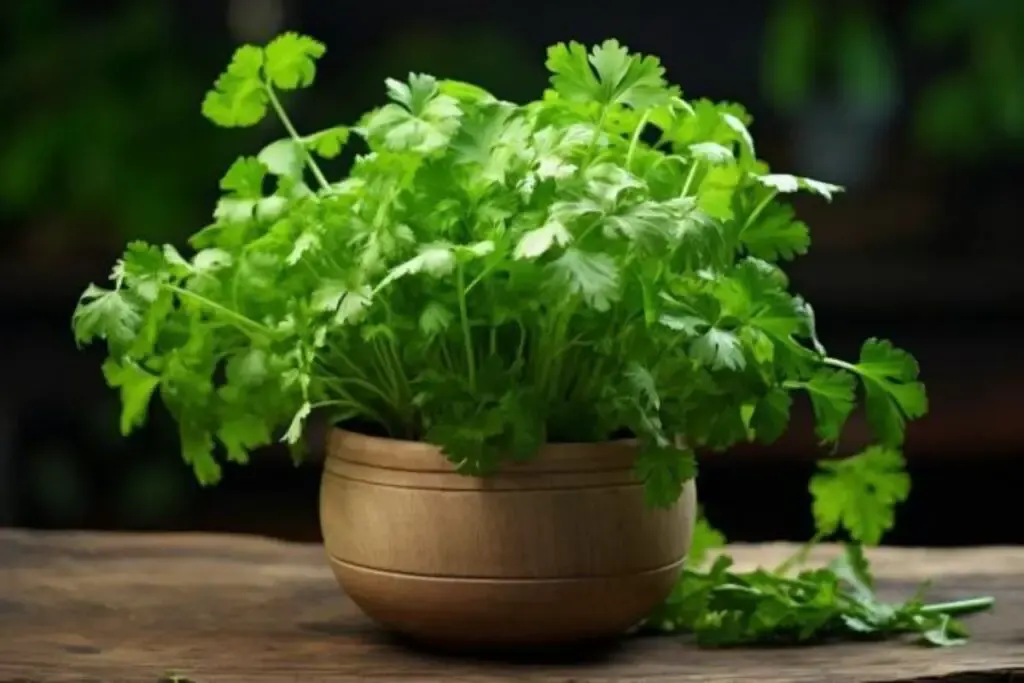
If you have limited garden space or prefer container gardening, you can successfully grow cilantro in pots:
- Container Selection: Choose a deep container with a capacity of at least 5 gallons for each cilantro plant. Ensure the container has good drainage.
- Potting Mix: Use a high-quality potting mix enriched with organic matter for optimal growth.
- Planting: Plant cilantro seeds or seedlings in the container, following the recommended spacing. Place the container in a sunny location.
- Water and Fertilize: Container-grown cilantro may require more frequent watering and light fertilization. Keep the soil consistently moist but not waterlogged.
Overwintering
Cilantro is a cool-season herb that tends to bolt and go to seed as temperatures rise. However, you can extend its growing season by employing a few strategies:
- Plant in the Fall: In regions with mild winters, consider planting cilantro in the fall. It will thrive in the cooler weather and continue to produce leaves during the winter months.
- Provide Protection: If you’re growing cilantro in pots, you can move the containers indoors during the coldest months, allowing your cilantro to survive through the winter.
- Mulch: Applying a layer of organic mulch around the plants can help insulate the roots and protect them from freezing temperatures.
Transplanting
Transplanting cilantro can be done to reposition plants or expand your herb garden:
- Timing: Cilantro seedlings can be transplanted when they have at least two sets of true leaves and are about 2-3 inches tall. Ensure the threat of frost has passed.
- Transplanting Depth: When transplanting, make a hole in the soil that is slightly larger than the root ball of the seedling. Place the seedling in the hole, ensuring it’s at the same depth as it was in its previous container or location.
- Watering: Water the transplants immediately after planting to help them settle into their new home.
Common Pests & Diseases
While cilantro is relatively trouble-free, it can occasionally encounter some common pests and diseases:
- Aphids: Aphids are small insects that may infest cilantro leaves, causing damage. You can dislodge them with a strong spray of water or use insecticidal soap if necessary.
- Cilantro Rust: Cilantro rust is a fungal disease that can affect the leaves, causing orange or yellow pustules. Ensure good air circulation, avoid overhead watering, and remove and destroy infected leaves.
- Cilantro Downy Mildew: Downy mildew can appear as yellow spots on cilantro leaves. Improve air circulation, avoid overhead watering, and use fungicides if necessary.
In your journey of growing and caring for cilantro, occasional encounters with pests and diseases are a natural part of gardening.
With vigilance and proper care, you can overcome these challenges and enjoy the satisfaction of harvesting your own homegrown cilantro.
Whether you’re harvesting fresh leaves for your culinary creations or enjoying the vibrant greenery in your outdoor space, cilantro brings a touch of freshness and flavor to your gardening experience.
Happy gardening, and may your cilantro thrive and enhance your meals with its delightful taste!

